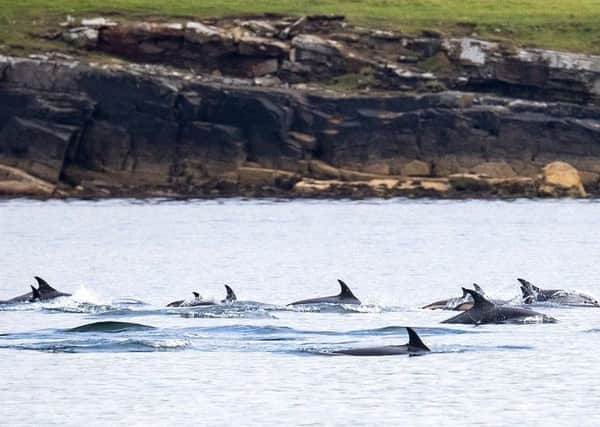Good summer for whale and dolphin sightings in the UK


Some 13 species and more than 500 sightings have been reported, and sightings continue to stream in.
The 2018 National Whale and Dolphin Watch event involved thousands of volunteers from all around the British Isles.
Advertisement
Hide AdAdvertisement
Hide AdIt was conducted between July 28 and August 5 and has revealed striking biodiversity of Britain’s whales, dolphins and porpoises.


Dr Chiara Giulia Bertulli, organiser of this year’s national event for the UK national research charity, Sea Watch Foundation, said: “This looks like being the best National Whale & Dolphin Watch event of the last two decades.”
This summer has seen a good number of humpback whale sightings all around the UK, with individuals popping up this last week in the North Sea off the Aberdeenshire coast and off Flamborough Head in Yorkshire. This species is making a noticeable comeback after many decades of exploitation in the North Atlantic.
Chiara added: “However, the most extraordinary sighting from this year’s Watch week was surely the Sowerby’s beaked whale which live stranded in the shallow waters of Belhaven in East Lothian, Scotland, on July 29.
Advertisement
Hide AdAdvertisement
Hide Ad“This year also saw the addition of the striped dolphin, which in Britain and Ireland, is very rare, seen occasionally off the Atlantic coasts mainly in the south-west of Ireland. This species of warm temperate seas came to the shore at Pendine in South Wales on July 31.
“At the time of writing, a total of 527 sightings have been submitted after the nine-day event. With regards to number of species recorded results show that records at this stage are up 50 per cent on last year. Cetacean data collection is strongly weather dependant. Factors such as sea state, swell height and visibility to the horizon affect how easily animals can be detected during a watch. Heavy rain and wind can even cause watches to be cancelled altogether. For these reasons, every year, we rely heavily on good weather conditions for the success of National Whale and Dolphin Watch. Like previous years, this year’s event was scheduled over nine days to increase the chances of coinciding with a favourable weather window.”
The weather forecast at the beginning of the event was very poor with frequent showers and strong winds around the country which forced several watches to be cancelled and to be rescheduled to this past weekend.
However, once the weather stabilized and the temperature increased the number of sightings increased dramatically and it showed.
Advertisement
Hide AdAdvertisement
Hide AdPossible explanations for this summer’s high number of cetacean (whales and dolphins) species sighted during this year’s event are the good stable weather recorded this summer, with high temperature which brought in warmer water species like striped dolphin, and created the conditions for plankton fronts to develop, attracting shoals of fish and in turn, whales and dolphins.
Chiara added: “We are seeing a general longer term trend for warm water species to be extending their range further north – species like the short-beaked common dolphin and the Risso’s dolphin as well as the striped dolphin. Since a greater number of species live in warm waters, the effects of climate change can actually be positive at mid latitudes such as around the British Isles.
But Dr Peter Evans, director of the Sea Watch Foundation, said: “We should still be a little cautious. Although new species of cetaceans have been added recently to the British list of mammals, there are more northern species that we could lose from our fauna – species like Atlantic white-sided dolphin and white-beaked dolphin, and the problem with tropical and warm temperate species entering our seas is that they face a much wider range of human pressures along the industrialised coastlines of northern Europe.”